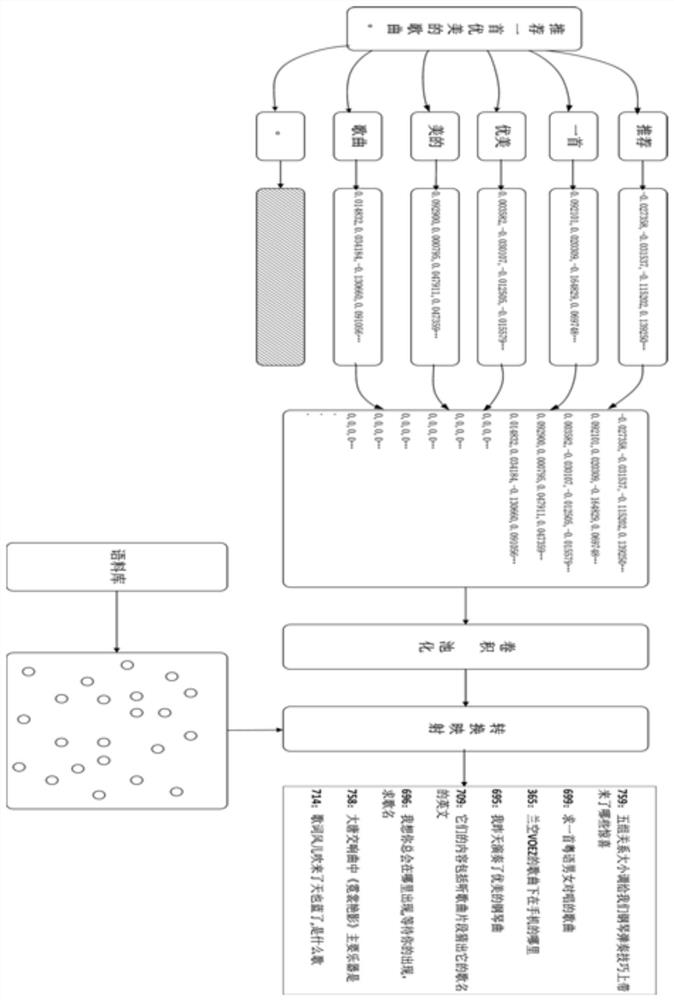A Cross-Domain Semantic Information Retrieval Method Based on Convolutional Neural Network
A convolutional neural network and semantic information technology, applied in the field of computer natural language processing, can solve problems such as high real-time computing power requirements, affecting model accuracy, unsatisfactory effect, etc., to overcome sparse features, improve classification accuracy, fast effect
- Summary
- Abstract
- Description
- Claims
- Application Information
AI Technical Summary
Problems solved by technology
Method used
Image
Examples
Embodiment 1
[0036] Embodiment 1: as Figure 1-4 As shown, a convolutional neural network-based cross-domain semantic information retrieval method, the specific steps of the method are as follows:
[0037] Step1. First, preprocess the retrieved information in the knowledge base, and then represent the processed information as sentence vectors. Then, use the SVM classifier of LibSVM to classify and train the sentence vectors to obtain the SVM classification model, and use the classification model to classify the user Classify the retrieved information to obtain the category of the user retrieved information;
[0038] Step2. Convert the user retrieval information into a sentence feature matrix. According to the category determined in Step1, use the corresponding approximate semantic convolutional neural network retrieval model for processing. The approximate semantic convolutional neural network retrieval model conversion layer will generalize the user retrieval information. The features of...
Embodiment 2
[0044] Embodiment 2: as Figure 1-4 As shown, a convolutional neural network-based cross-domain semantic information retrieval method, the specific steps of the method are as follows:
[0045] Step1. First, preprocess the retrieved information in the knowledge base, and then represent the processed information as sentence vectors. Then, use the SVM classifier of LibSVM to classify and train the sentence vectors to obtain the SVM classification model, and use the classification model to classify the user Classify the retrieved information to obtain the category of the user retrieved information;
[0046] Step2. Convert the user retrieval information into a sentence feature matrix. According to the category determined in Step1, use the corresponding approximate semantic convolutional neural network retrieval model for processing. The approximate semantic convolutional neural network retrieval model conversion layer will generalize the user retrieval information. The features of...
Embodiment 3
[0066] Embodiment 3: as Figure 1-4As shown, a convolutional neural network-based cross-domain semantic information retrieval method, the specific steps of the method are as follows:
[0067] Step1. First, preprocess the retrieved information in the knowledge base, and then represent the processed information as sentence vectors. Then, use the SVM classifier of LibSVM to classify and train the sentence vectors to obtain the SVM classification model, and use the classification model to classify the user Classify the retrieved information to obtain the category of the user retrieved information;
[0068] The concrete steps of described step Step1 are:
[0069] Step1.1. Input the retrieved information in the knowledge base, perform word segmentation and filter stop word processing on the retrieved information, map each filtered word into a word vector, and then add the word vectors to form the retrieved information the sentence vector;
[0070] The present invention considers ...
PUM
 Login to View More
Login to View More Abstract
Description
Claims
Application Information
 Login to View More
Login to View More - R&D
- Intellectual Property
- Life Sciences
- Materials
- Tech Scout
- Unparalleled Data Quality
- Higher Quality Content
- 60% Fewer Hallucinations
Browse by: Latest US Patents, China's latest patents, Technical Efficacy Thesaurus, Application Domain, Technology Topic, Popular Technical Reports.
© 2025 PatSnap. All rights reserved.Legal|Privacy policy|Modern Slavery Act Transparency Statement|Sitemap|About US| Contact US: help@patsnap.com



